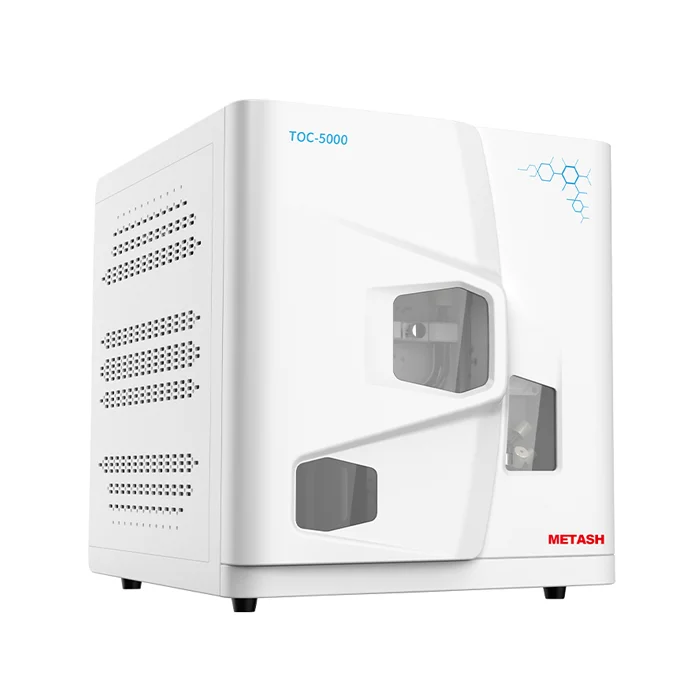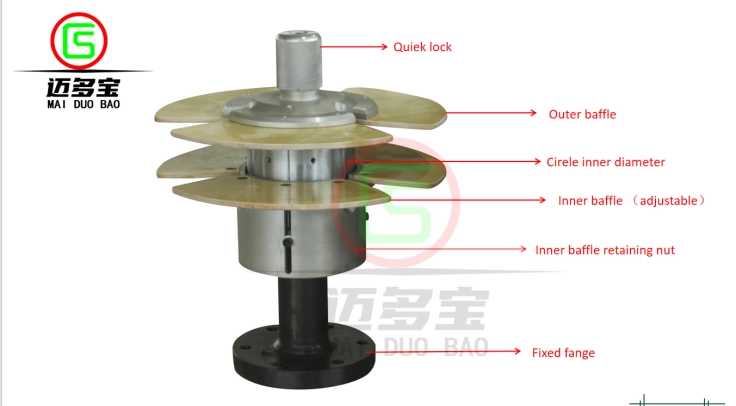Sodium bromide (NaBr), an important inorganic compound, holds significant value in various industrial applications. With its high melting and boiling points, as well as excellent solubility, NaBr has long been a key component in traditional photosensitive materials, used in the preparation of black-and-white film and printing paper. It also serves as a brominating agent in dyeing, fragrance synthesis, and organic synthesis processes, and is utilized in the production of detergents, flame retardants, and other chemicals. Additionally, NaBr is employed in water treatment for disinfection in combination with chlorine and as a reagent in laboratory analysis. Despite a decline in its medical applications due to safety concerns, its industrial demand continues to dominate.
The accurate analysis of organic impurities in sodium bromide is crucial for ensuring product quality and reliability in high-precision industrial applications. This is particularly important in industries such as chemical engineering and pharmaceuticals, where raw material purity is of utmost importance. In this blog post, Metash, one of the high performance analytical equipment manufacturers, will share the analysis of NaBr inorganic compound by laboratory TOC analyzer for sale.

Background
Sodium bromide (NaBr) is an inorganic compound with a molecular weight of 102.89. It appears as a white crystalline or powdery solid at room temperature, is odorless, and has a slightly bitter, salty taste. Its physical and chemical properties are notable: it has a melting point of approximately 747°C, a boiling point of 1390°C, a density of 3.203 g/cm³, and is highly soluble in water (with a solubility of 90.5 g/100 mL at 20°C). Its aqueous solution is neutral, and it is slightly soluble in alcohol. Chemically, NaBr is hygroscopic but does not deliquesce in air. It can be oxidized to form elemental bromine under acidic conditions and releases hydrogen bromide (HBr) when reacting with dilute sulfuric acid. Bromide ions can also be replaced by fluorine or chlorine.
In terms of applications, NaBr was once widely used in the medical field to inhibit the central nervous system through the release of bromide ions. It was used as a sedative, antiepileptic drug, and diuretic for treating conditions such as neurasthenia, insomnia, and edema. However, its medical use has significantly decreased due to side effects and the emergence of safer alternatives.
In the industrial sector, NaBr remains a key player. It is a crucial component in photosensitive materials for traditional black-and-white film and printing paper. It also acts as a brominating agent in dyeing and fragrance synthesis processes and is an important raw material for organic synthesis, including the production of detergents and flame retardants. Additionally, NaBr is used in water treatment for disinfection in swimming pools, inhibiting microbial growth, and as a reagent for trace cadmium determination and as a buffer solution component in laboratories.
Testing the organic carbon content in sodium bromide helps quantify organic residues, thereby avoiding side reactions in bromination processes. It also enables the monitoring of process pollutants, optimization of production parameters, and ensures compliance with environmental discharge regulations based on TOC thresholds. Moreover, it meets the stringent ppm-level purity requirements of high-precision fields such as electronic materials, thereby establishing a multidimensional management system that encompasses quality, process, and ecological safety.

Experimental Section
1. Instruments and Reagents
- TOC-5000 RN Total Organic Carbon Analyzer
- Sodium bicarbonate (ultrapure grade)
- Potassium hydrogen phthalate (primary standard reagent)
- Phosphoric acid (ultrapure grade)
- Anhydrous sodium carbonate (primary standard reagent)
- Hydrochloric acid (ultrapure grade)
2. Analytical Conditions
- TOC host carrier gas flow: 180.0 ml/min
- TOC host carrier gas pressure: 0.200 Mpa
- Catalyst: Platinum
- Carrier gas: Oxygen (≥99.995%)
- TC combustion tube temperature: 680°C
- Detector: Nondispersive infrared detector (NDIR)
Sample Pretreatment
A 1-mL sample was diluted with ultrapure water to 50 mL. The software's NPOC standard curve and built-in TOC method (TOC = TC - IC) were used to test the organic carbon content in the sample. Spiking recovery experiments were also conducted.
Results and Discussion
1. Standard Curves
(1)NPOC Standard Curve
Potassium hydrogen phthalate was weighed and prepared into a 1000 mg/L organic carbon standard storage solution. This solution was then diluted with pure water to a 100 mg/L inorganic carbon standard working solution, which was further diluted to create a series of organic carbon standard solutions with concentrations of 0.0, 2.0, 5.0, 10.0, 20.0, 40.0, and 100.0 mg/L. The NPOC standard curve was plotted.
(2)IC Standard Curve
Anhydrous sodium carbonate and calcium bicarbonate were weighed and prepared into a 1000 mg/L inorganic carbon standard storage solution. This solution was then diluted with pure water to a 100 mg/L inorganic carbon standard working solution, which was further diluted to create a series of inorganic carbon standard solutions with concentrations of 0.0, 2.0, 5.0, 10.0, 20.0, 40.0, and 100.0 mg/L. The IC standard curve was plotted.
(3)TC Standard Curve
Potassium hydrogen phthalate was weighed and prepared into a 1000 mg/L organic carbon standard storage solution. This solution was then diluted with pure water to a 100 mg/L organic carbon standard working solution. Equal volumes (10 mL) of the inorganic and organic carbon standard working solutions were mixed and diluted with pure water to 100 mL to create a 200 mg/L total carbon standard solution. This solution was further diluted to create a series of total carbon standard solutions with concentrations of 0.0, 4.0, 10.0, 20.0, 40.0, 80.0, and 200.0 mg/L. The TC standard curve was plotted.
2. Test Results
Each sample was tested in triplicate. The sample spectra are shown in Figures 5 and 6.
(1)Direct Method
(2)Difference Method
Conclusion
This study used the direct and indirect methods to determine the TOC content in sodium bromide samples. To ensure the accuracy of the measurement data, the samples were appropriately diluted before testing to fit within the standard curve test range. Proper dilution also reduces the salt content in the samples, thereby extending the lifespan of the catalyst.
www.metashcorp.com
Metash





